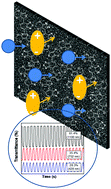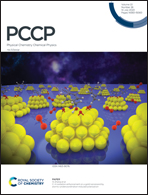Benzothiadiazole bridged EDOT based donor–acceptor polymers with tunable optical, electrochemical, morphological and electrochromic performance: effects of solvents and electrolytes†
Abstract
Donor–acceptor (D–A) polymers have been widely studied for their tunable electronic properties, however, it is surprising that systematic studies on the effect of different solvents and electrolytes on their opto-electrochemical, morphological and electrochromic performance have drawn only little attention. In the presented work, nine different D–A polymer films, poly(4,7-di(2,3-dihydrothieno[3,4-b][1,4]dioxin-5-yl)benzo[1,2,5]thiadiazole) (a-i-P1), were electrosynthesised using different polar solvents (PC, MeCN and DCM) and supporting electrolytes (TBAPF6, TBAClO4 and TBABF4). A thorough study of these D–A polymer films using cyclic voltammetry, UV-Vis-NIR spectroscopy, FE-SEM, spectroelectrochemistry and electrochromic techniques has been performed. We found a significant effect of both the supporting electrolytes and solvents on the morphology of polymer films which correlates well with their opto-electronic properties. Films prepared using the TBAClO4/PC system show a smooth morphology with a significantly high coloration efficiency of 264 cm2 C−1 and an optical contrast of 65.3%. Such differences in the optical and electrochemical properties of polymer films were explained by the ion pair formation during polymerisation.

- This article is part of the themed collection: 2020 PCCP HOT Articles


 Please wait while we load your content...
Please wait while we load your content...